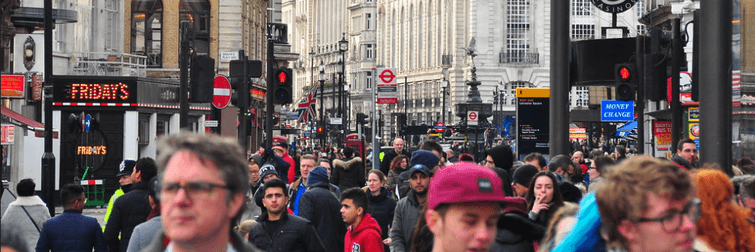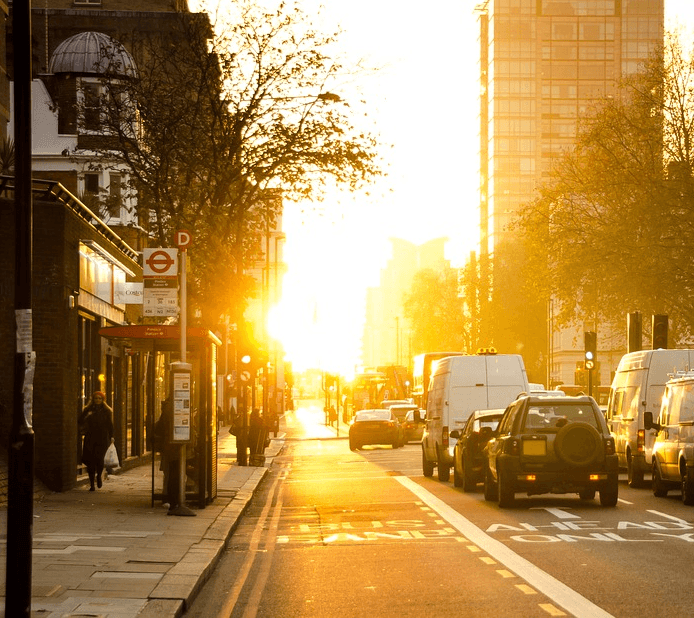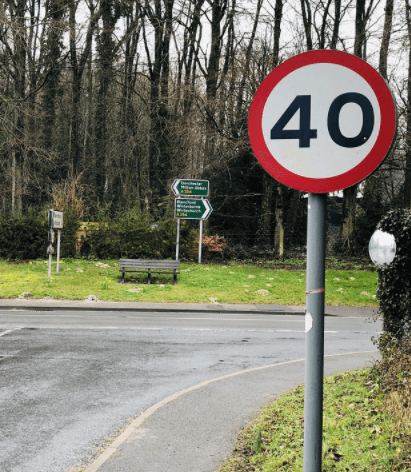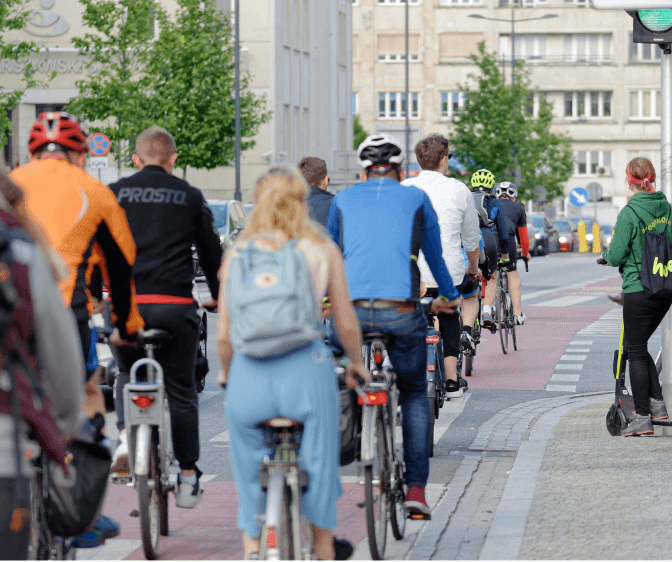
blog: Applying the 'Safe Systems' approach to the design of future cities
Thursday 29th April 2021
Reading the Future Cities blogs this month, it is striking that new technology is likely to have a continued major impact on what our urban environments look like, and how we use and move around them. Although digital technology, changes in land use planning, and the reformatting of residential streets such as through LTNs will no doubt have a significant impact, one of the most significant areas of positive potential change arguably lies in how we consider road safety.
Historically, road safety has focused on cluster sites or ‘accident black spots’ on the presumption that there is a linear relationship between all types of collision, i.e. by reducing total collisions, the number of people dying or seriously injured at these locations will reduce too. However, since the mid-1990s international best practice has used a different approach.
The Safe Systems approach (also known as Vision Zero) accepts that people are fallible and therefore it approaches design on the basis that some collisions are inevitable, but that these should result only in damage-only or slight injury outcomes. If people make mistakes or are inclined to not comply with the rules of the road in particular locations, then the Safe Systems approach maintains that death or life-changing injury is too high a price for people to pay for that behaviour and designers should take this into account.

Although Vision Zero was adopted by TfL in 2018, its practical use has been slow to start, and there is little to suggest that a similar approach is being adopted wholesale by other local highway authorities. Indeed, in the absence of a road safety strategy for England there is arguably little to compel stretched authorities to radically overhaul their approach to road safety and design. It is possible therefore, that designers and transport planners can play a vital role in the evolution of road safety in the UK, by actively adopting these principles in our work. Key Safe Systems aspects that we can take the lead in considering are...
1. The responsibility for road safety is shared between users and the highway authorities
How does our consideration of safety in our Transport Assessments, urban design, transport strategies, and emerging master plans support this approach? Do we assume that all users will be ‘compliant’ or have we actively considered how people are likely to behave – will people likely speed, or walk through live traffic to reach a popular destination for example?
2. Post Collision Response
Arguably, one of the most fundamental ways that a Safe Systems approach can start to be meaningfully taken is in the consideration of road safety records in reports. A shift away from retrospective cluster analysis is urgently needed, and instead we need to be prepared to get into the weeds on what infrastructure or development proposals for an area could foreseeably mean for safety in a local area. By deeply considering road safety qualitatively and taking full account of causal factors in reported collisions rather than being led by what aggregated data suggests, our technical work can actively contribute to not just maintaining the status quo, but potentially increasing how intrinsically safe the local highways may be for today’s users and those in future.
3. Safe Speeds
Although vehicles are now more technologically advanced with respect to safety, our human bodies are just as vulnerable as they ever were. For this reason, with fatality and serious injury rates increased at higher speeds, the reduction of speeds plays an important part in ensuring safety of all users. Safe speeds are not limited to the consideration of vehicular traffic, but in designing across all modes. So for example, in designing cycling infrastructure, the impacts of cyclists on pedestrians and other cyclists must be actively considered. Data from the Netherlands indicates that the highest rate of serious injuries are occurring on cycle tracks because of the higher exposure of users to high impact collisions.

4. Safe Roadsides
Long-established practice from Sweden, the Netherlands and elsewhere shows that there are some simple practices which can make highway corridors significantly intrinsically safer. To reduce head-on collisions, with their higher rate of Killed or Seriously Injured (KSI) outcomes, traffic flows on principal routes could be lightly segregated, creating sinuous green routes which reinforce slower speeds, as opposed to traditional formal, higher speed, dual-carriageways. So in developing street hierarchies, can the principal routes with their traditional 40mph limits, be provided with a soft, median segregation? This might also facilitate the provision of Sustainable Drainage System (SuDS) infrastructure, or street trees to increase the greening of the proposed road. How are bus stops or pedestrian crossing facilities provided to maximise safe crossing behaviour?

5. Safe Use
Enabling safe user behaviour, while not designing only for the ‘compliant’ user is key to a Safe Systems approach, and there are many ways that this can be supported in our work. Do emerging strategies map demographic data with KSI outcomes to identify areas to target road safety training? Does community safety training involve local accessibility officers to connect with harder to reach groups? Do Travel Plans embed road safety or driver training for users of proposed developments?
The Safe Systems approach is only just starting in the UK and while there is a great deal that can be learned from experiences overseas, we need to find our own vernacular for this, which takes account of our particular cultural norms. In this respect, the debate on what this means for us as transport professionals in the UK is also just starting. ITP and Royal HaskoningDHV are playing an important part in that debate, and we look forward to engaging our clients, partners and colleagues in working out what this means for our projects over the coming months and years.
